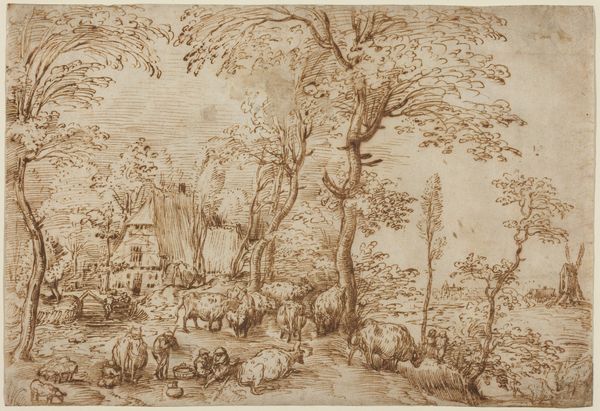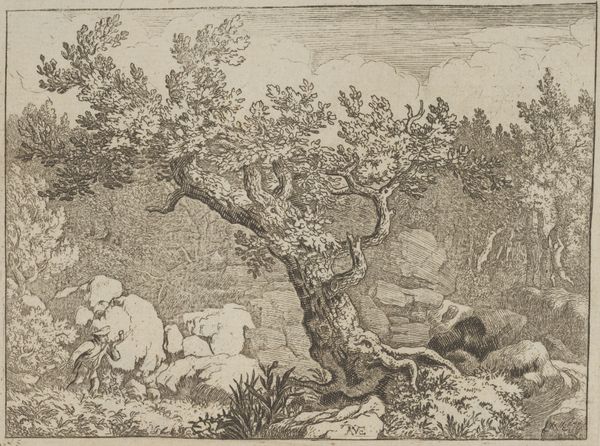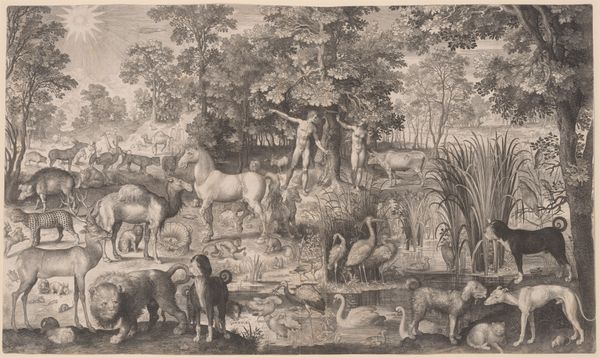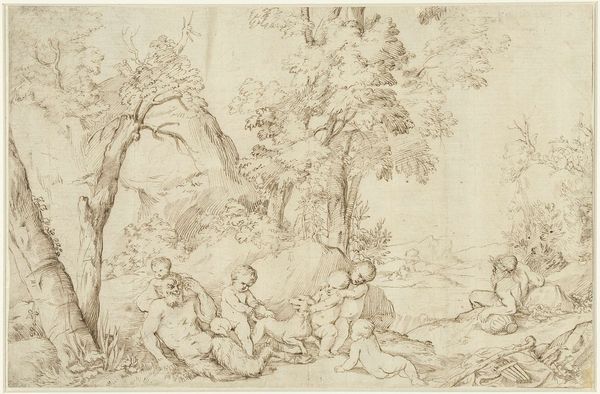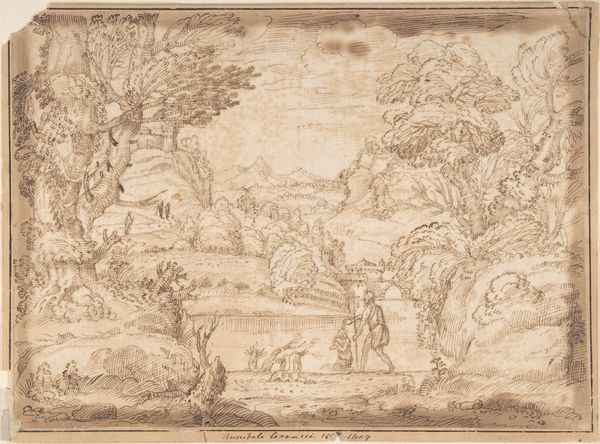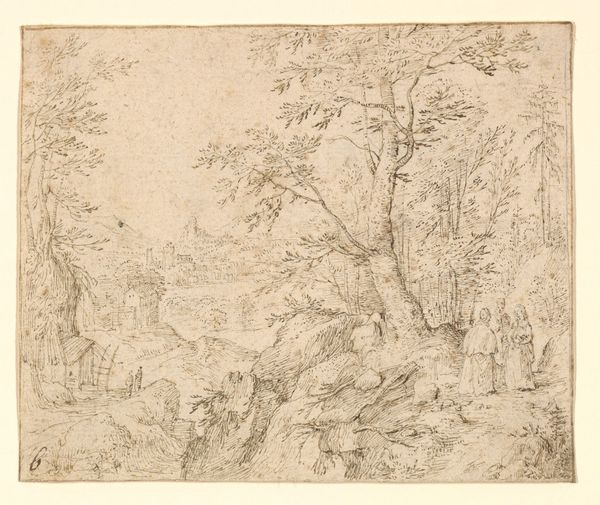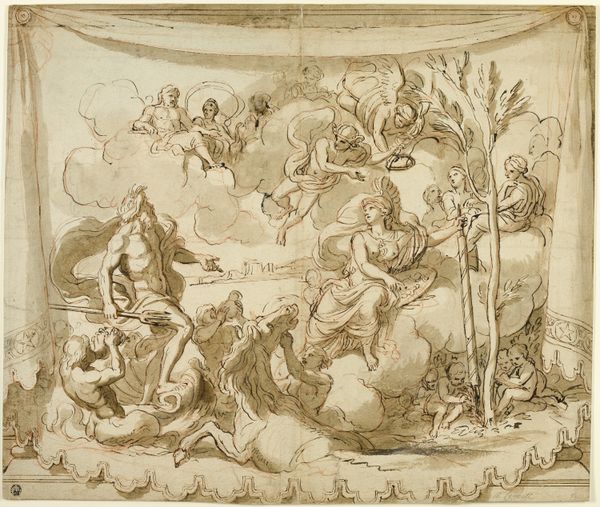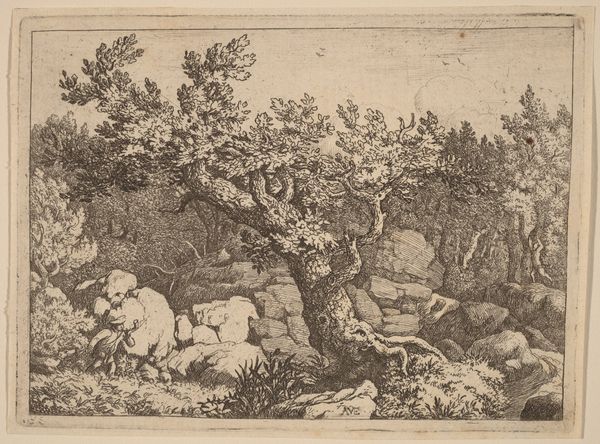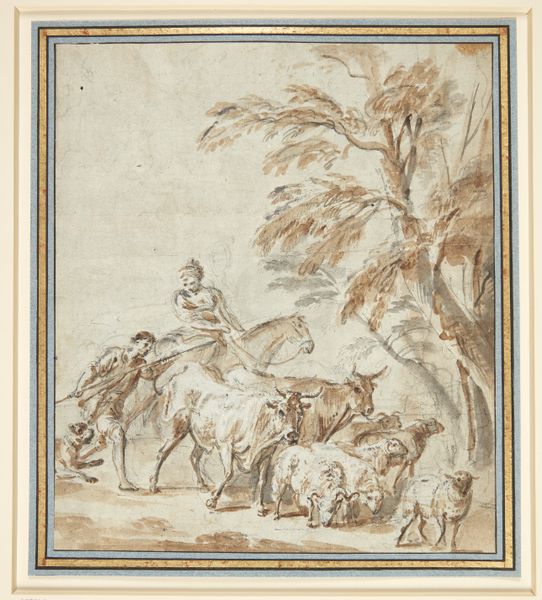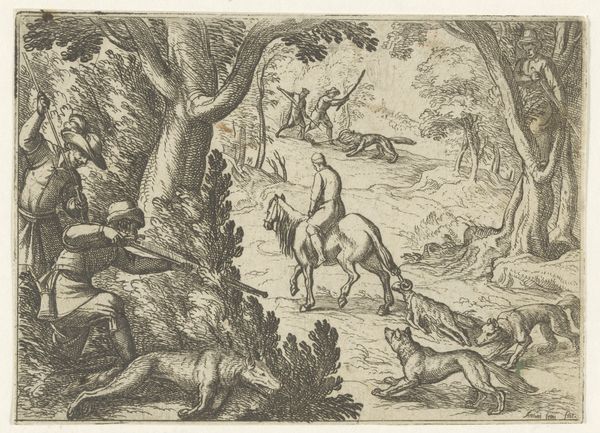
etching
#
allegory
#
narrative-art
#
baroque
#
etching
#
landscape
#
etching
#
figuration
#
line
#
genre-painting
Dimensions: height 400 mm, width 570 mm
Copyright: Rijks Museum: Open Domain
Sinibaldo Scorza made this intricate etching, "Orpheus Charming the Animals in a Landscape," around the early 17th century. Etching involves coating a metal plate with wax, then scratching a design into the wax to expose the metal underneath. The plate is then dipped in acid, which bites into the exposed metal, creating lines. Ink is applied to the plate, filling the etched lines, and then the surface is wiped clean. Finally, the plate is pressed onto paper, transferring the inked image. Notice the fineness of the lines Scorza achieved with this method. Through his skilled labor, he was able to depict various animals, each rendered with meticulous detail. In this period, prints like these allowed for the widespread dissemination of images, connecting the artist to a broader audience. This wasn't just an aesthetic exercise; it was a social and economic activity too. By emphasizing the physical labor and the skilled traditions involved in its production, we can appreciate the complex interplay between art, craft, and society.
Comments
rijksmuseum about 2 years ago
⋮
Biblical and mythological stories afforded artists the possibility of incorporating a host of animals in a single composition. In this drawing Sinibaldo Scorza depicted a scene from the story of Orpheus described by the ancient Roman poet Ovid. In it, Orpheus charms all living things with his wonderful singing and lyre playing. The artist filled the sheet from top to bottom with animals from all corners of the world – dromedary can even be spotted in the distance.
Join the conversation
Join millions of artists and users on Artera today and experience the ultimate creative platform.
